
Manage Fear and Stress in 5E D&D with Van Richten’s Guide to Ravenloft
Van Richten’s Guide to Ravenloft brings the trappings of horror to your fifth edition Dungeons & Dragons games. To aid Dungeon Masters with running horror with their own groups the book offers a step-by-step walkthrough of how to run a 5E D&D horror game. Thus far, we’ve talked about preparing for a horror game and running a horror game with atmosphere and skillful pacing using the steps in Van Ricthen’s Guide to Ravenloft as a framework. But what about after the horror is over? Fear and stress are staples of the horror genre. They’re the proverbial nuts and bolts of how it works. Experiencing fear and stress can leave players… well, stressed and fearful. Thankfully, Van Richten’s Guide to Ravenloft offers some advice for this as well.
After the horror
Aftercare is the time you take to check in after a scene of intense fantasy, especially fantastic horror or stress. The point of aftercare is to ensure all parties involved come down from their intense emotions gradually, and through reassurance and open communication all parties return to their baseline of normalcy safely.
The concept of aftercare for a 5E D&D session can be crucial, especially after an intensely emotional session. Roleplaying requires a lot of energy in every context and just as it can help us explore and discover situations and elements of ourselves in a closed environment there’s conversely the potential to get pretty messed up emotionally.
We develop strong bonds to our characters. We give them life and they are our avatars for connecting and engaging with the stories we tell. As such, sometimes the emotions in a session are very real despite being imaginary. Aftercare helps everyone process what happened during a session and encourages open, honest communication. This is doubly important when it comes to horror due to the fear and stress involved in playing the game itself.
Asking processing questions is a great way to perform some aftercare and Van Richten’s Guide to Ravenloft offers some insightful options for questions to get you started. As a DM, be ready to communicate and be open to criticism and feedback, as some of the guided questions pointedly ask for this.
I love the idea of using aftercare for any high emotion sessions regardless of whether they’re in the horror genre or not. A TPK can be devastating, and I’ve even seen gaming groups break up over less. A little aftercare goes a long way and can really help your players remember that through all of their imaginary tribulations, the whole group remain friends with the same goals whether that’s telling compelling stories, experiencing fun action or whatever.
Fear and stress in 5E D&D
When it comes to horror, the genre itself runs on stress and fear. Balancing these elements with fantasy and fun can be difficult. The aftercare mentioned earlier can be extremely helpful with this.
As DM, you should be ready to embrace stress and fear elements as encouraged by Van Richten’s Guide to Ravenloft. While optional the book offers some lingering effects and rules for character fears to augment your horror gaming experience.
Seeds of Fear
Beyond the supernatural horrors your characters encounter, 5E D&D characters might also have phobias or irrational fears. These range from fear of the dark to fear of heights, water or even social anxiety.
Van Richten’s Guide to Ravenloft recommends offering inspiration when characters play up their fears. While not specified, I feel like the spirit of this suggestion is to offer inspiration when a character acts sub-optimally as a result of a fear. After earning inspiration in this way a player would not be able to do so again until the next session.
While I understand this would work for certain groups and would encourage non-roleplay heavy groups to act in character more, I’m not sold on this idea for groups who already play their characters like thespians. An alternative rule I might suggest is inspired by the Cypher System from Monte Cook Games. I love the idea of the DM throwing in a complication resulting in the players being awarded an inspiration. Then, when players roll a natural 1, the DM can have a free complication.
This alternative suggestion offers more horror theming and encourages players to embrace even negative story elements, as when they happen to their character, the player gets rewarded. Especially considering the stress and fear elements this rule would mitigate some of the fun subversion from having a character crippled during a scene by a specific fear. This suggestion also deals with those pesky optimal players who do something like claim their character’s fear makes the character fight harder due to fight or flight response.
Fear. This section offers an idea I actually really like — the notion that characters might need to make saving throws for mental effects from nonmagical triggers. From a planned tactic failing to the character’s own chosen phobias, any type of saving throw might be triggered at the DM’s discretion. Encountering a fear might also trigger an increase to a character’s stress score.
Stress. Van Richten’s Guide to Ravenloft proposes a new mechanic, which works similarly to the sanity score but in a different context. The stress score increases with duress and significantly traumatic situations and decreases with self-care or respite. We saw a similar mechanic in effect during a big boss fight toward the end of Campaign 2 of Critical Role. The way the stress score works is by imposing a penalty equal to the stress score to any ability check, attack roll or saving throw.
Reducing stress
I really like the proposed options for reducing stress in this section. Essentially, reducing stress works like reducing exhaustion, which makes sense considering stress definitely contributes to exhaustion and burnout in the real world.
However, there are also magical options presented here. Calm emotions (a 2nd-level spell) suppresses all effects of a character’s stress score for the duration, while lesser restoration (another 2nd-level spell) removes one level of stress permanently. Greater restoration resets a character’s stress score to 0.
This mechanic feels ripe for horror and I could see this mechanic extending to any darker or grittier campaign or one shot. This also feels like an excellent mechanic to incorporate into something like a supers game in the vein of, say, Invincible, Alphas or The Boys. The elegance of this stress system captures my attention immediately. I love this exploration into mundane and more realistic feeling mental mechanics outside the bounds of magic.
I could see how some people might dislike this mechanic for adding extra math to a 5E D&D. However, I would contend the fact 5E D&D is so math light is exactly how this edition accommodates specific modular optional rules like this one. Everything in moderation after all, right?
*Featured image — During a seance, a spirit makes itself known to the Keepers of the Feather. Van Richten’s Guide to Ravenloft includes resources to make sure your 5E D&D game is both spooky and safe in ways right for your specific group. [Image courtesy Wizards of the Coast]




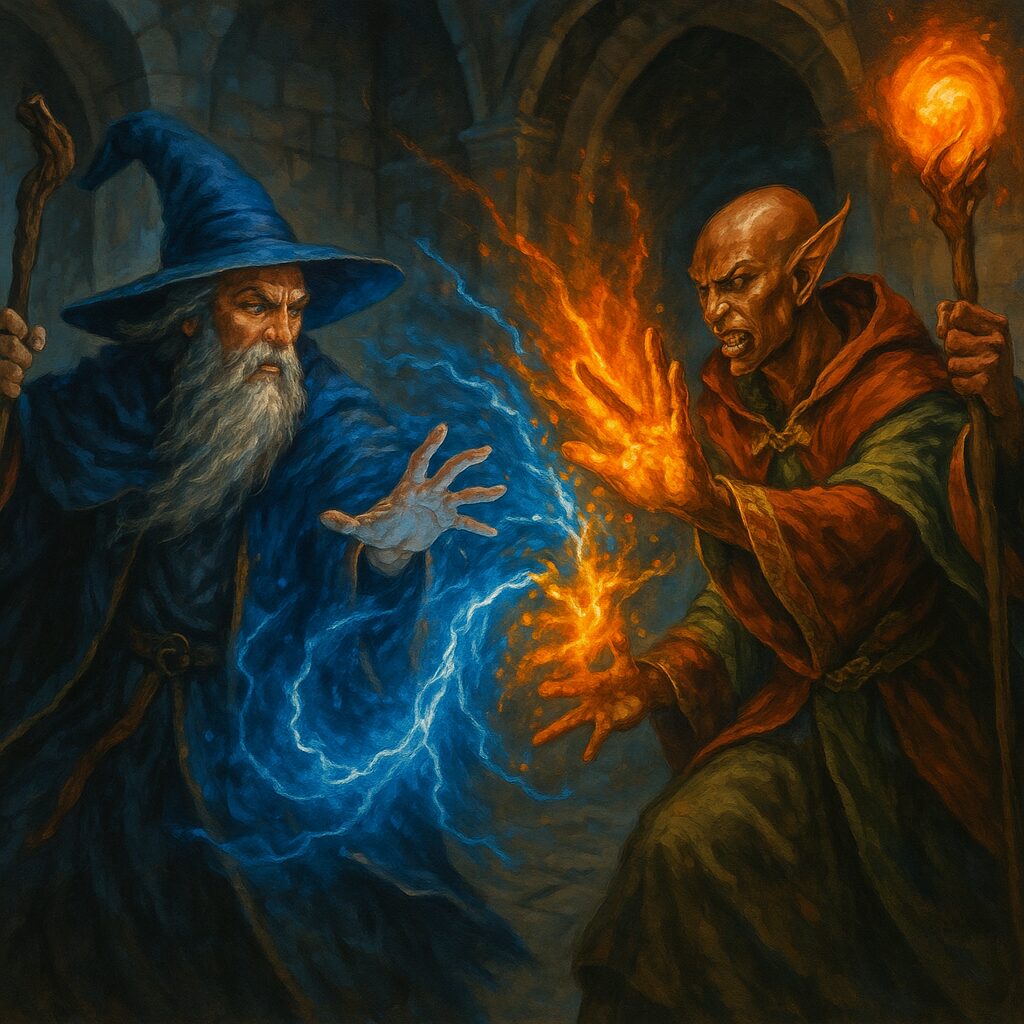
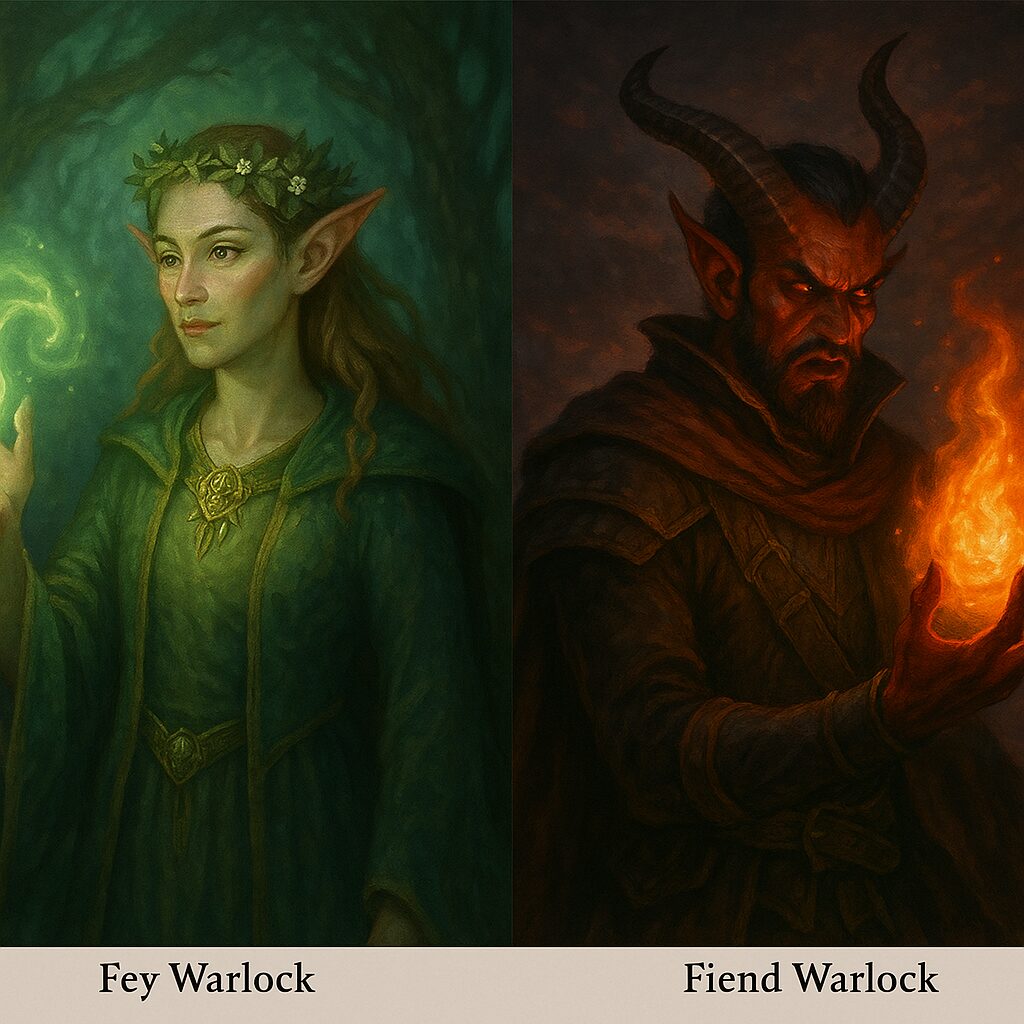
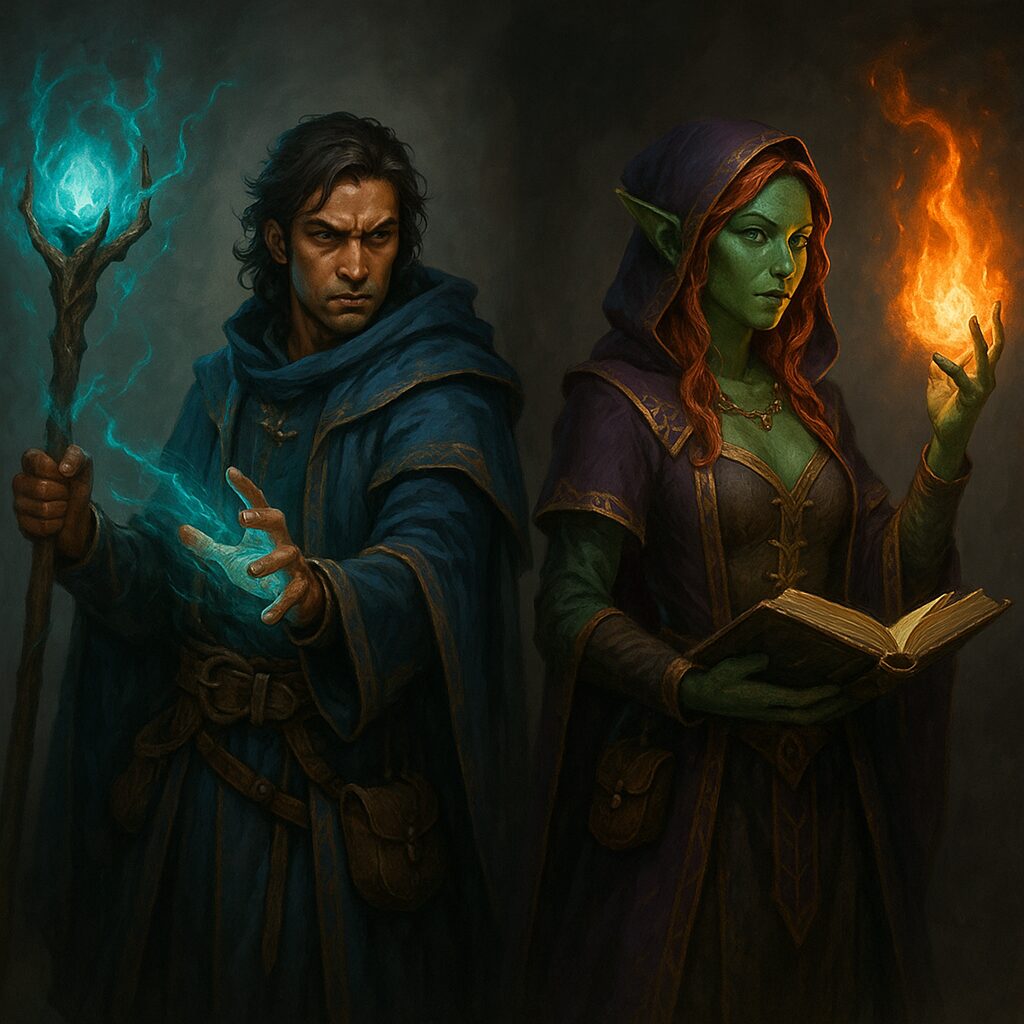
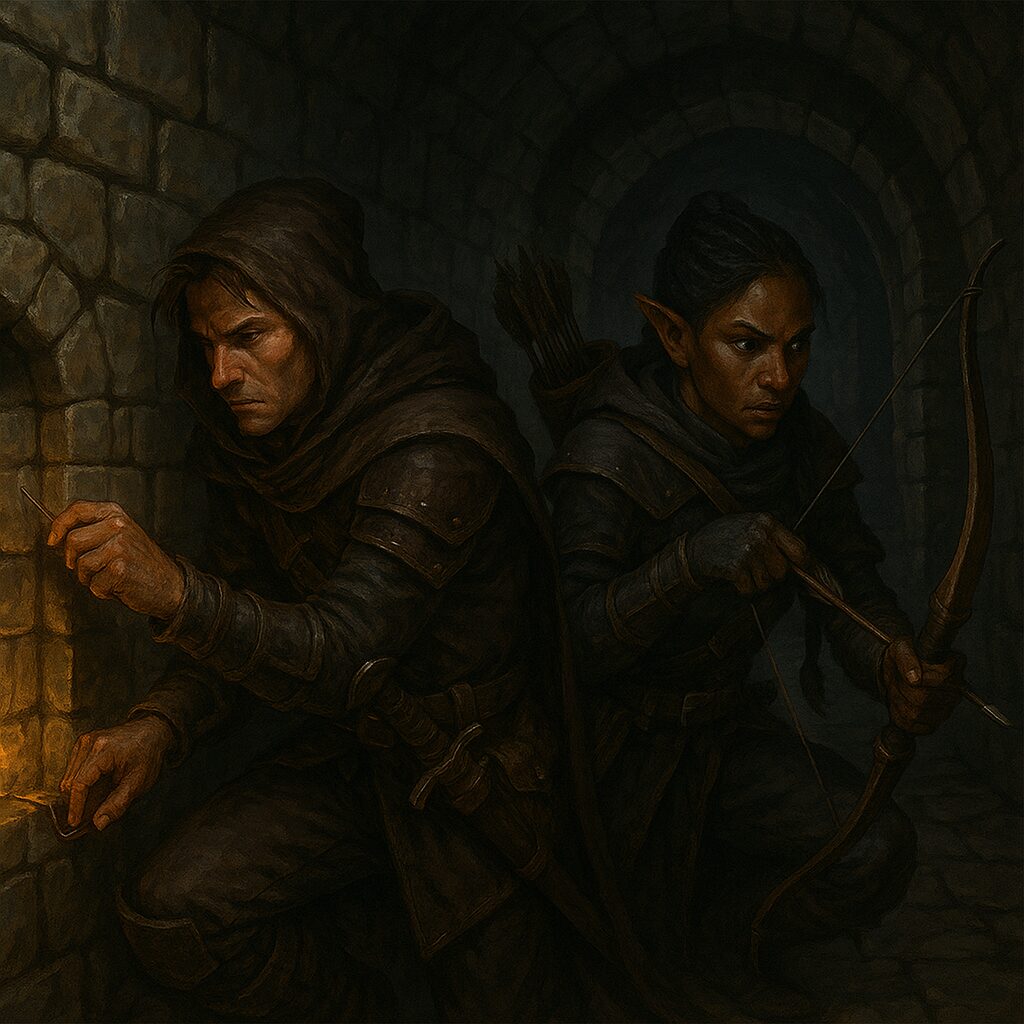
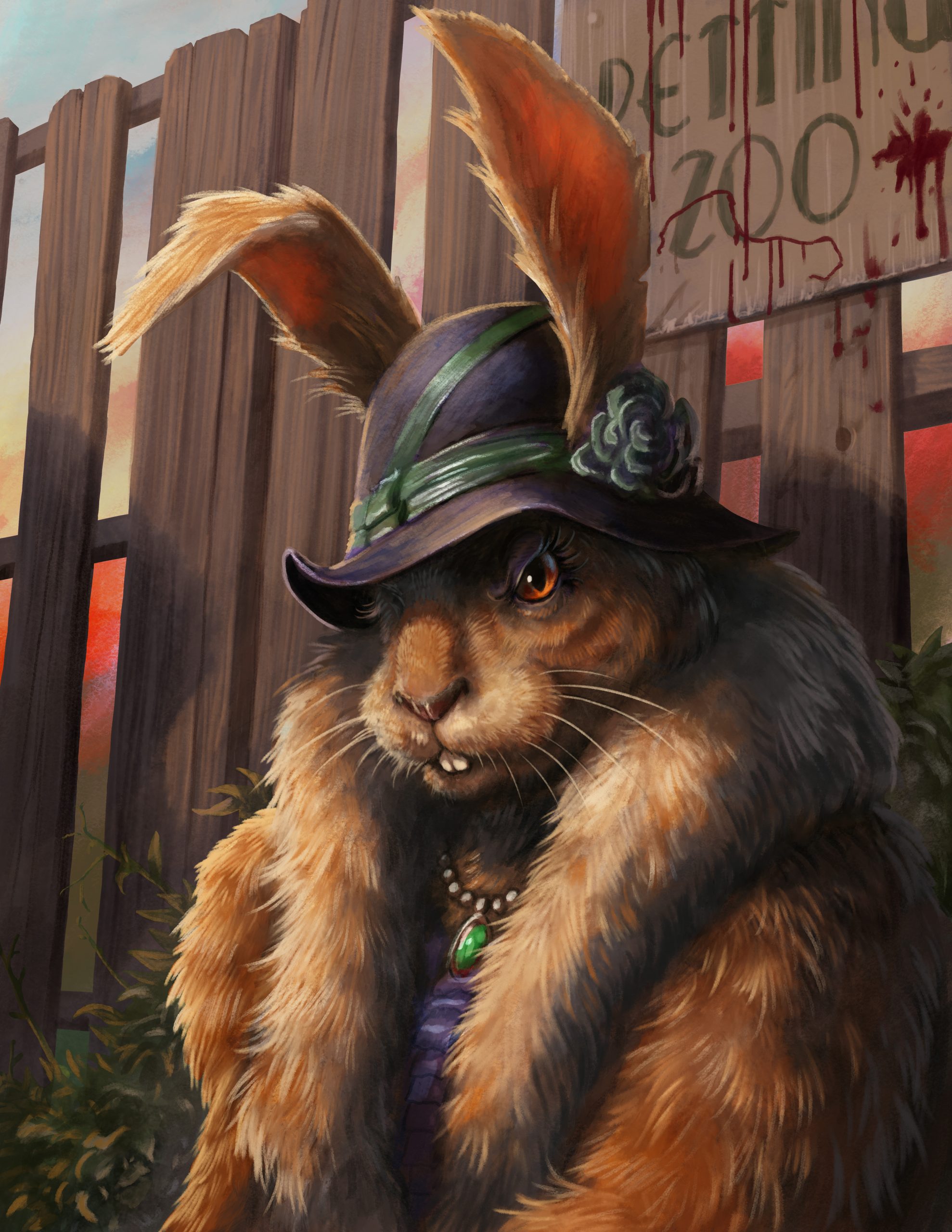
Pingback: Dark Gifts Await 5E D&D’s Haunted Heroes with Van Richten’s Guide to Ravenloft – Nerdarchy
June 24, 2021 at 12:59 pm